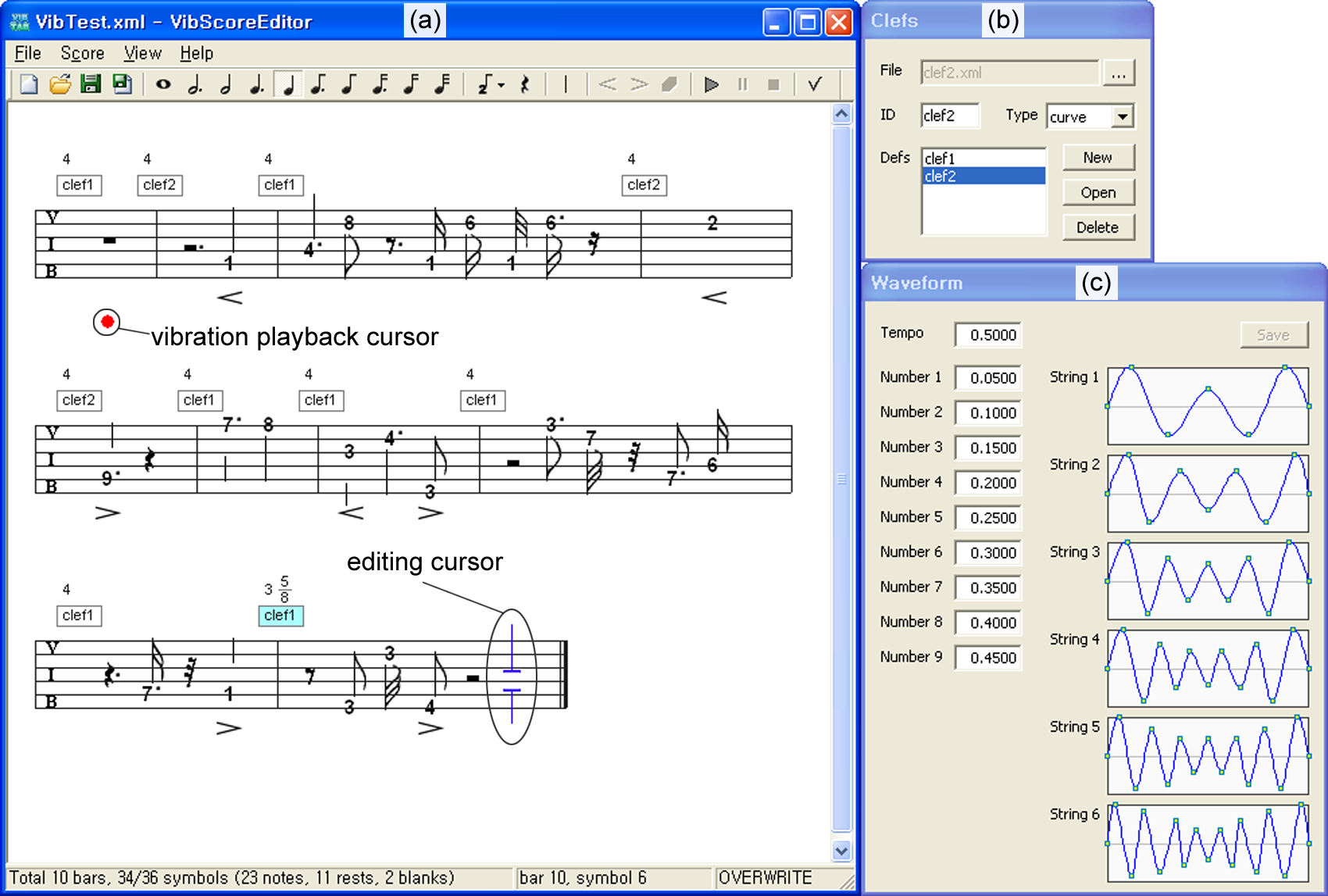VibScoreEditor

Tool Summary
| Metadata | |
|---|---|
| Release Yearⓘ The year a tool was first publicly released or discussed in an academic paper. | 2009 |
| Platformⓘ The OS or software framework needed to run the tool. | Windows |
| Availabilityⓘ If the tool can be obtained by the public. | Unavailable |
| Licenseⓘ Tye type of license applied to the tool. | Unknown |
| Venueⓘ The venue(s) for publications. | IEEE WHC |
| Intended Use Caseⓘ The primary purposes for which the tool was developed. | Prototyping |
| Hardware Information | |
|---|---|
| Categoryⓘ The general types of haptic output devices controlled by the tool. | Vibrotactile |
| Abstractionⓘ How broad the type of hardware support is for a tool.
| Consumer |
| Device Namesⓘ The hardware supported by the tool. This may be incomplete. | Brüel & Kjaer Model 4810, Voice Coil, Vibration Motor |
| Device Templateⓘ Whether support can be easily extended to new types of devices. | Yes |
| Body Positionⓘ Parts of the body where stimuli are felt, if the tool explicitly shows this. | N/A |
| Interaction Information | |
|---|---|
| Driving Featureⓘ If haptic content is controlled over time, by other actions, or both. | Time |
| Effect Localizationⓘ How the desired location of stimuli is mapped to the device.
| Device-centric |
| Non-Haptic Mediaⓘ Support for non-haptic media in the workspace, even if just to aid in manual synchronization. | None |
| Iterative Playbackⓘ If haptic effects can be played back from the tool to aid in the design process. | Yes |
| Design Approachesⓘ Broadly, the methods available to create a desired effect.
| Direct, Procedural, Additive |
| UI Metaphorsⓘ Common UI metaphors that define how a user interacts with a tool.
| Keyframe, Music Notation |
| Storageⓘ How data is stored for import/export or internally to the software. | Custom XML |
| Connectivityⓘ How the tool can be extended to support new data, devices, and software. | None |
Additional Information
VibScoreEditor applies uses music notation as a metaphor for vibrotactile editing. In this system, a “vibrotactile clef” determines the frequency and waveform assigned to each “pitch” occupying a position on the staff. Notes have a pitch by virtue of this position, an intensity indicated by a number inside the note head, and a duration set by the shape of the note. Two dynamics, crescendo and decrescendo, allow for gradual increasing and decreasing of note intensity respectively. By switching between different clefs and arranging a series of vibrotactile notes, rests, and dynamic markings, users can create complex time-varying vibration patterns.
For more information, consult the 2009 World Haptics Conference paper.